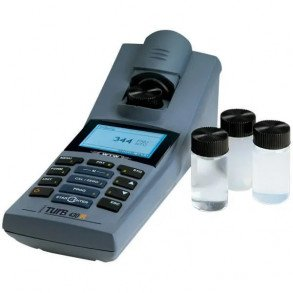Turbidity may be defined simply as the liquid that is cloudy. The particles dispersed in the liquid that cause the cloudiness are often too small for us to detect individually. These tiny bits might be germs, bacteria, dirt, minerals, protein, or oils.
It is possible to detect turbidity optically to determine if suspended particles are present. It is determined by measuring the number of suspended particles after shining a spotlight through a sample. The turbidity of a solution increases with the number of particles present. It’s essential to comprehend that, despite the fact that turbidity and suspended solids have a correlation, turbidity measurement does not correspond to total suspended solids measurement (TSS).
Turbidity measurement techniques have changed throughout time. Turbidity may be calculated using a variety of techniques. Visual techniques and large-scale metres may both be used to determine how murky the water is.
The Jackson Candle Technique, which involved placing a vertical glass beaker above a flame, was the first technique used to quantify turbidity. Until the point when the user could no longer clearly see the candle flame, samples were added to the tube.
The equivalent turbidity measurement was produced by adding a final height to the sample. The foundation for present turbidity measurements was very crucial, despite the method’s crudeness. Turbidimeters, a device with fixed light beams, an opening, and a sensor, is used in modern turbidity measurement techniques.
The majority of contemporary turbidimeters need a sample to be collected, added to a vial, and then inserted into the device. Next, using photodetectors placed 90 degrees from the sample, and the fixed light beam is pointed in its direction, measuring the amount of light that is transmitted and the amount that is scattered. Or you may bring the instrument to the sample using portable equipment, like our Photepette device. As seen in the illustration below, the users placed a CuveTip on the apparatus and inserted the tip straight into the sample to obtain a reading.
Turbidity may be measured by modern devices in two different ways: by measuring the light that is lost from the transmitted beam and by measuring the light that is scattered onto nearby detectors.
As a consequence of light scattering in the presence of suspended and dissolved particles, photodetectors may detect light. As a consequence of more light being dispersed, turbidity measurements increase as a particle or solid concentration rises. For samples with high solid concentrations or turbidity, observations involving the variation in the intensity of light from the light ray are normally appropriate, while light scattering is a good approach for samples with low solid concentrations. A turbidity meter is a great approach for figuring out the “quality” of the water in the sample since it measures how clear the water is.
Normal drinking water is colourless, transparent, and has a turbidity rating that is virtually zero. Measurements of turbidity that are higher than the average value may point to the presence of germs, pathogens, or particles that aren’t necessarily apparent to the human eye. Furthermore, used for research in several laboratories, turbidimetric measures are used in the chemical, food, beverage, and pharmaceutical industries.

